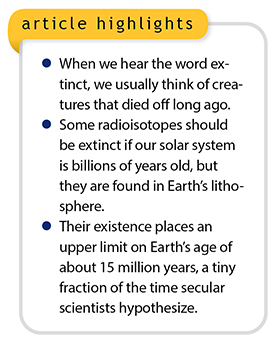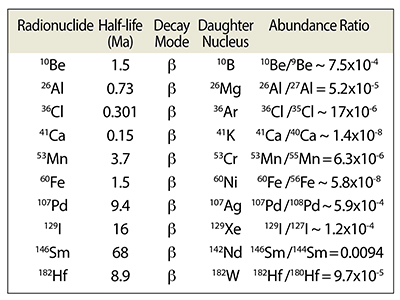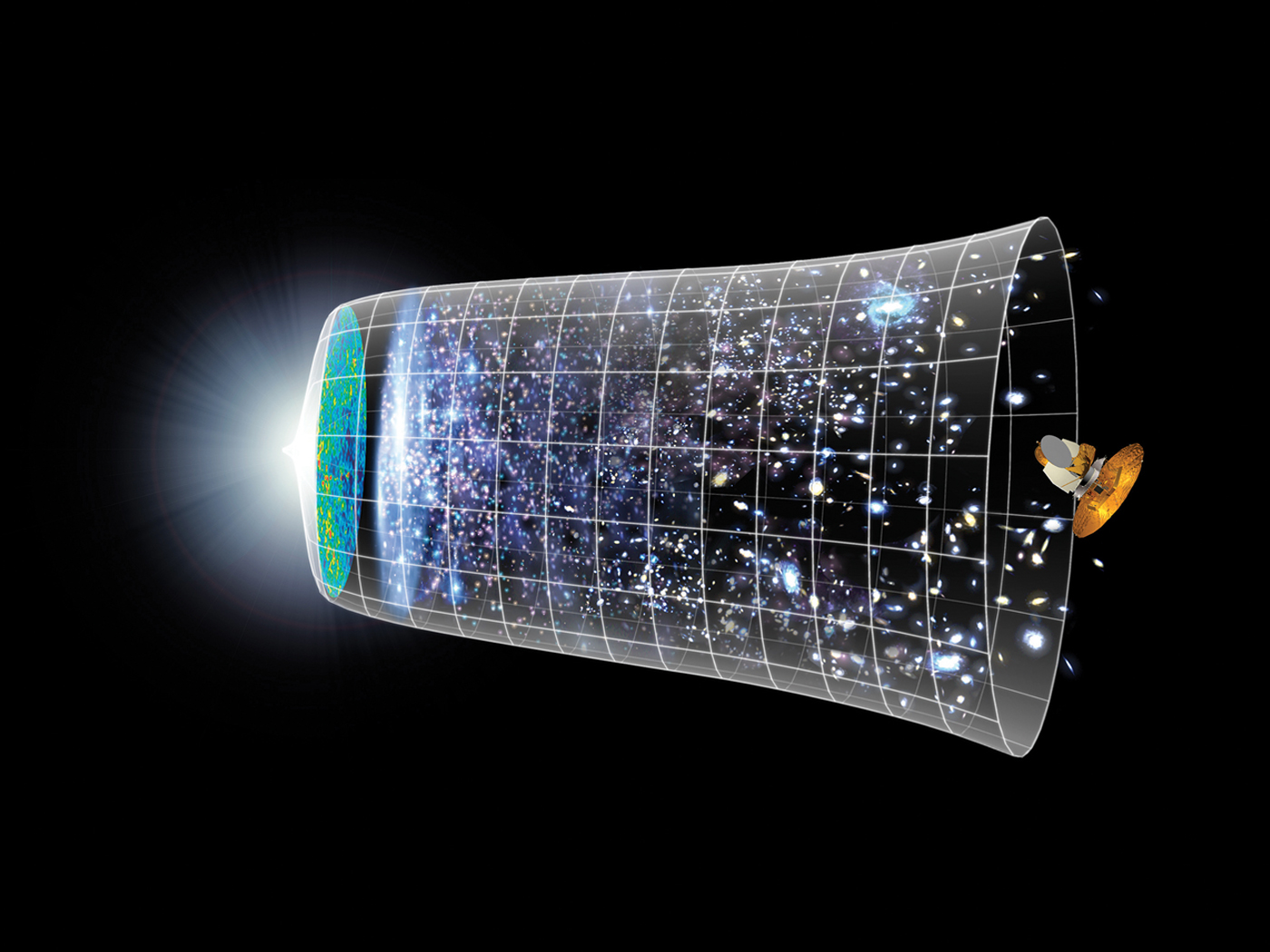 What do you think of when you hear the word extinct? Dinosaurs, perhaps? Maybe saber-toothed cats, mammoths, or short-faced bears? We might also include the more recent Bali tiger, passenger pigeon, and West African black rhinoceros.
What do you think of when you hear the word extinct? Dinosaurs, perhaps? Maybe saber-toothed cats, mammoths, or short-faced bears? We might also include the more recent Bali tiger, passenger pigeon, and West African black rhinoceros.
There are a group of radioisotopes that are typically termed “extinct” (Table 1). They are defined as radionuclides that formed by stellar nucleosynthesis before the formation of the solar system about 4.6 billion years ago.1 These radionuclides were somehow injected into the molecular cloud from which our solar system supposedly originated. They were thought to have decayed to an unmeasurable presence in solar system objects. It has long been believed that their daughter isotopes can be used to gain information about the early stages of the solar system’s formation. Specifically, the short decay time for 26Al (aluminum) has been used to measure the time between its supposed injection into the molecular cloud and the cloud’s subsequent collapse.

There are at least four significant problems with this hypothetical scenario. First, it assumes the classical deep time model for the solar system’s origin. Second, it has been shown that the formation of elements with atomic numbers above iron in the periodic table in a supernova is unlikely.2 Third, it doesn’t present a viable mechanism for how the extinct radionuclides were transported from a nearby supernova to the supposed molecular cloud that generated our solar system. Fourth, the so-called extinct radionuclides still display measurable abundance ratios for Earth rocks (Table 1).
26Al was also found in meteoritic material in 1977.3,4 The most likely nuclear reactions for generating 26Al from 27Al are 27Al (p,d) 26Al and 27Al (n,2n) 26Al.5 Cross-sections for each reaction are not particularly large: 26 mb for the first and 116 mb for the second.6 In addition, both reactions exhibit very sharp production cross-section peaks, the first at ~27 MeV and the second at ~20 MeV. While the production cross-sections for 26Al make its production in meteoritic material containing 27Al possible under the right conditions, it’s not probable. So, its presence in meteoritic material presents a problem for secular science’s dating of the solar system.
From Table 1, it’s clear that the so-called extinct radionuclides exist in Earth’s lithosphere at measurable levels. This means that either they must be continually produced in the near surface rocks, as is hypothesized for 26Al in meteorites, or Earth is much younger than secular science demands. The existence of measurable amounts of 60Fe, 53Mn, 26Al, 36Cl, or 41Ca in Cambrian and Precambrian rock layers makes the argument of continuous production problematic for secular science and supports a recent creation by imposing an upper limit of ~1.5 x 107 years on the age of the earth.7
References
- Extinct radionuclide. Wikipedia. Posted on en.wikipedia.org.
- Cupps, V. R. 2018. Stellar Nucleosynthesis: Where Did Heavy Elements Come From? Acts & Facts. 47 (1): 10-12.
- Lee, T., D. A. Papanastassiou, and G. J. Wasserburg. 1977. Aluminum-26 in the Early Solar System: Fossil or Fuel? The Astrophysical Journal. 211: L107-L110.
- Clayton, D. D. 1994. Production of 26Al and other extinct radionuclides by low-energy heavy cosmic rays in molecular clouds. Nature. 368: 222-224.
- The nuclear reaction nomenclature (p,d) on a target nucleus, such as 27Al, represents an incident proton picking up a neutron from the target nucleus. The (n, 2n) reaction represents an incident neutron knocking out a neutron from the target nucleus. In both cases the residual nucleus is missing a neutron but remains an isotope of the target nucleus family, i.e., they have the same number of protons.
- The abbreviations mb and MeV stand for one millibarn (1 x 10-24 square centimeters) and one million electron volts (1.6022 x 10-13 joules).
- The half-life (amount of time for half of the radioactive isotope to decay) of 60Fe is ~1.5 x 106 yrs. A general rule of thumb when measuring radioisotope concentrations is that they become unmeasurable using current technology after about 10 half-lives have passed, i.e., when their concentration is reduced by 210. In the case of 60Fe, that time interval would be ~1.5 x 107 years.
* Dr. Cupps was Research Associate at the Institute for Creation Research and earned his Ph.D. in nuclear physics at Indiana University-Bloomington.











